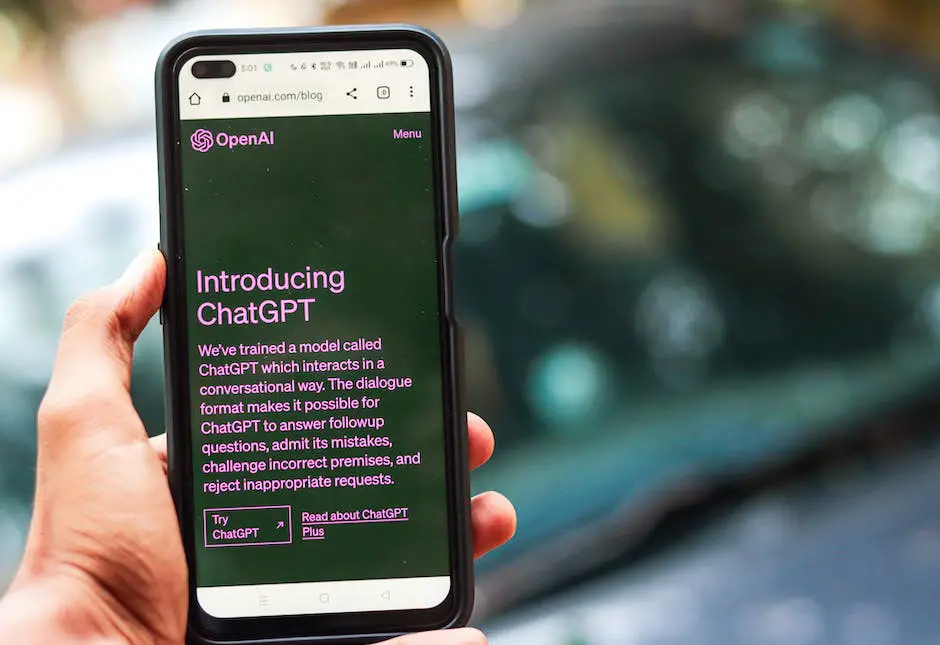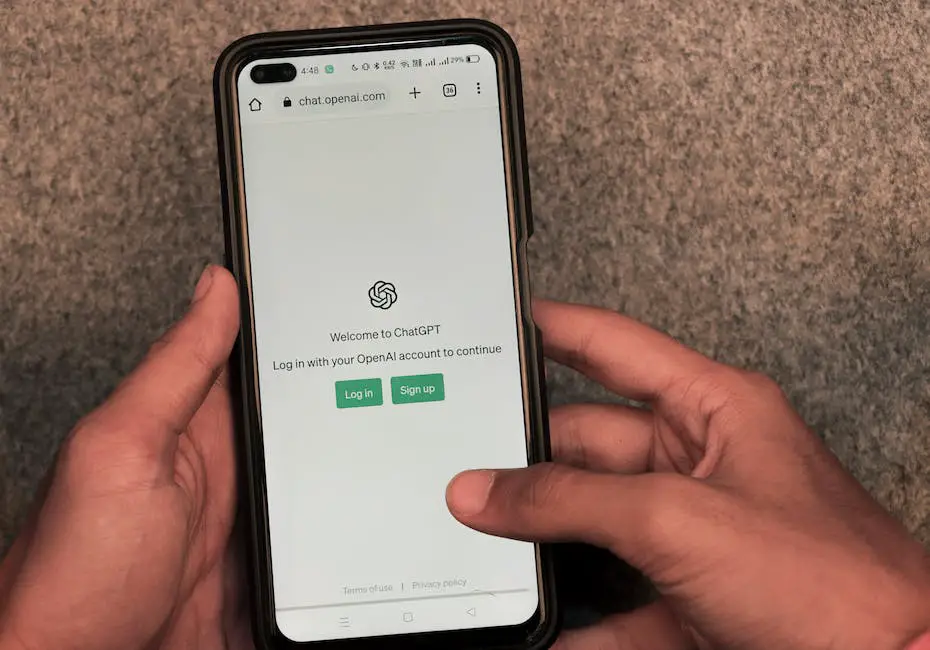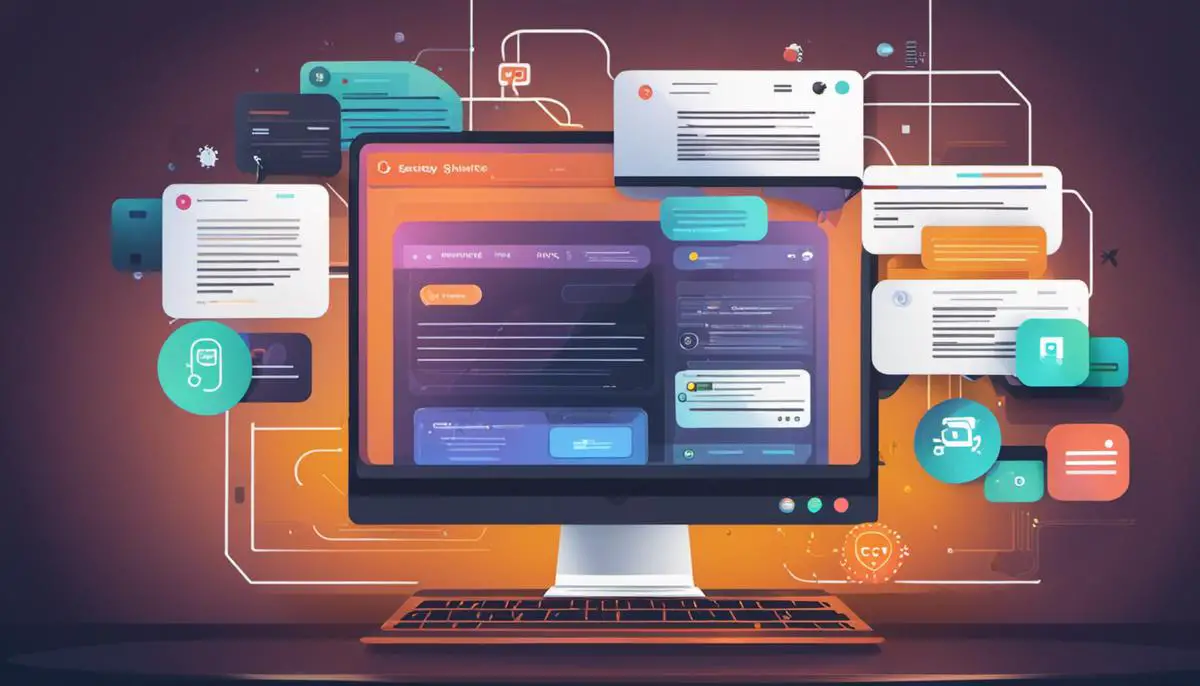Artificial intelligence is transforming various facets of the digital world, and ChatGPT – generative pre-trained transformer developed by OpenAI, is radically changing how we interact with websites. As more developers embrace this innovative technology, the landscape of website functionalities and user experience is undergoing a drastic shift. This exploration commences by delving into the current applications of ChatGPT in websites, illuminating how this AI model fuels chatbots and improves customer interactions. We’ll then segue into an in-depth analysis of ChatGPT’s impact on website user experience, from simplifying navigation to enhancing user engagement. A critical discussion will be dedicated to the role of ChatGPT in improving website accessibility, particularly for individuals with visual impairments or cognitive disabilities. Addressing the potential challenges in implementing ChatGPT, we will unfold possible security concerns and the need for consistent maintenance. Lastly, the curtain will be lifted on the future of ChatGPT, envisioning its transformative potential on websites and user-website interactions in the coming years.
Current Applications of ChatGPT in Websites
Current Applications of ChatGPT in Websites
ChatGPT is currently being utilized across numerous websites for various applications, primarily in customer service and support. Users interact with ChatGPT-powered chatbots which have the ability to understand and respond to a range of customer inquiries. These chatbots are capable of providing instant responses, significantly reducing response times and improving customer experience.
These chatbots can be found in platforms like e-commerce websites, tech support websites, and more. They are proficient in answering frequently asked questions, guiding the user through the site, helping the user make purchases, and providing user-specific recommendations based on their browsing history.
Another dimension of their application is the personalization of user experience. Driven by machine learning, these chatbots can progressively learn from previous interactions, modify their responses accordingly, and provide a more user-specific interaction the more it is used by an individual.
Capabilities of ChatGPT in Websites
The capabilities of ChatGPT have made it possible to have a natural conversation with the AI-driven chatbots. Unlike traditional chatbots which are confined to pre-programmed responses, ChatGPT powered chatbots understand and respond based on the context of the conversation. They can interpret ambiguous user input, seek clarifications, and provide a comprehensive response to non-linear customer inquiries.
Thanks to the advanced Natural Language Processing (NLP) technology, these chatbots can handle multilingual customer interactions, afford higher customer engagement, provide round-the-clock service, and significantly reduce the workload of human customer service agents.
Effectiveness of ChatGPT in Handling Customer Interactions
ChatGPT has proven to be effective in managing customer interactions. One of the most crucial aspects offered by ChatGPT is its consistency. The chatbots consistently provide the same level of service throughout. Their automated nature ensures that they are impervious to issues like exhaustion or mood swings that could affect human agents.
Chatbots also provide cost-effectiveness. The wide-scale deployment of these chatbots eliminates the need for a large human customer service force, thereby saving costs. The fact that these bots can provide service round the clock without any need for breaks further enhances their effectiveness.
Looking Forward: The Promise of ChatGPT on Websites
The road ahead for ChatGPT on websites is filled with exciting potential. As we witness continuous advancements in machine learning technology, the predictive power and capabilities of AI-chatbots like ChatGPT are set for significant upgrades. Future developments may extend to a diverse range of conversation styles and purposes, empathetic response to customer sentiments, efficient recall of previous customer conversations, and the ability to handle complex interactions in such a way that would make the user feel as if they were communicating with an actual human being.
By utilizing the capabilities of ChatGPT, businesses are poised to manage a vast amount of customer interactions with relative ease. Its potential to enhance customer satisfaction and bolster a brand’s reputation is immense. With a focus on learning and improving response quality via user feedback, ChatGPT is paving the way for a revolutionized approach to digital customer interaction.

Impact of ChatGPT on Website User Experience
Transforming the User Experience: ChatGPT and Website Navigation
With the integration of ChatGPT into websites, we are set to witness an evolution in the user experience, particularly with regard to navigation. The traditional challenge of navigating through extensive website data will be significantly reduced by utilizing sophisticated tools like ChatGPT. Its ability to comprehend and respond to natural language inquiries ensures that users gain quick access to the information they seek, simply by conversing with the chatbot. This cutting-edge feature rids users of the exhaustive process of sifting through multiple pages and simplifies their navigational journey, enhancing their overall website interaction experience.
Making Information Access Easier
ChatGPT has been designed and developed with a keen focus on comprehending and generating human-like text. Because of its advanced language understanding capabilities, ChatGPT can decipher complex queries and provide relevant, accurate responses. In the future, as the AI becomes even more sophisticated, users will be able to conduct nuanced conversations with the ChatGPT. Such technology will make finding information on websites as easy as having a conversation, making data access quicker and more intuitive than ever before.
Improvements in User Engagement
User engagement is a critical factor that determines the success of a website. High interactivity levels often correlate to longer visit times, better user satisfaction, and higher conversion rates. With the integration of ChatGPT, websites can boost interactivity significantly. The chatbot can provide immediate responses, keeping the users engaged without the need for human intervention. Moreover, ChatGPT has an extensive knowledge database that it can utilize to answer a broad range of questions accurately and thoroughly. It can even be programmed to offer personalized recommendations based on user data, which could significantly improve user engagement.
Strategizing User Experience with ChatGPT
While these integrations promise significant enhancements in user experience, it’s crucial for website developers to strategize their implementation carefully. The primary goal should be to make the user’s interaction as simple and seamless as possible. This could mean enabling the chatbot to initiate conversations, reply to queries within the website’s context, or provide assistance with complex tasks. The chat must be designed in a way that it feels like the user is interacting with a knowledgeable assistant who understands their needs and responds accordingly.
Augmenting Customer Service with ChatGPT
Beyond the user experience, ChatGPT integrations can also potentially transform customer service delivery on websites. Currently, most websites rely on FAQ sections or customer service teams to address inquiries. However, ChatGPT can automate and personalize this process. As a chatbot, it can be available 24/7, providing instant responses to customer inquiries, thereby increasing customer satisfaction and loyalty.
ChatGPT and Personalization
With continuous learning and improvement, ChatGPT can help deliver personalized user experiences. It can remember user preferences, past interactions, and interpret the user’s intent behind queries. By leveraging this contextual understanding, the chatbot can provide more accurate and relevant responses, enhancing the user’s overall experience.
As artificial intelligence evolves, so does the future of ChatGPT, developed by OpenAI, on websites. The integration of this advanced technology can greatly enhance website navigation, simplify information access, and boost user engagement. The use of ChatGPT holds the potential not only to revolutionize online customer service but also to offer a more personalized user experience. However, successful integration of chatbots requires careful and strategic planning that aims to augment user benefits and ensure uninterrupted communication.

ChatGPT and Website Accessibility
With the emergence of AI-driven technology like ChatGPT, the horizon for an upgrade to website accessibility is on the rise. This state-of-the-art conversational AI tool is designed to comprehend user inputs, thus enabling it to generate responses that closely mimic human interactions. If utilised efficiently, it could dramatically improve the usability of websites, particularly for individuals with disabilities, marking a transformation in the world of website accessibility.
One of the main groups which could benefit from the implementation of ChatGPT on websites are people with visual impairments. Traditional website navigation methods can pose challenges for these individuals. Screen readers and Braille displays, the commonly employed assistive technologies, while useful, can at times be cumbersome and not wholly facilitating.
With ChatGPT, these challenges could be mitigated. By allowing users to converse with the website via voice or written text, a user with a visual impairment can receive information and navigate the website in a more intuitive and conversational manner. Thus, conversational AI like ChatGPT could potentially replace or supplement traditional screen reader functionalities, making web content more accessible in a user-friendly manner.
Another set of individuals who stand to gain from ChatGPT integration on websites are those with cognitive disabilities. Navigating information-intensive websites is often complex and frustrating for those with cognitive limitations. However, conversational AI, like ChatGPT, with its user-friendly approach, can help simplify the process for these users.
Instead of sifting through webpages, menus, or search results, users with cognitive disabilities can simply communicate with ChatGPT in a conversational style, similar to how they would speak to another person. This simplification of information gathering can make interacting with websites a substantially easier and more pleasant experience for these users.
The future of ChatGPT on websites holds promising potential. As this technology matures and evolves, its capabilities will likely increase, fostering enhanced website accessibility through voice navigation and interactive conversation. In addition to aiding users with disabilities, the broader population might also reap benefits from a more intuitive, conversational web browsing experience made possible by AIs like ChatGPT.
Technology companies and website developers are integrating machine learning and AI into their platforms, and OpenAI’s ChatGPT is a pivotal part of this trend. This technology, moving forward, is set to improve the usability and accessibility of websites, making them more widely accessible and user-friendly.
While there’s a wealth of potential to be found in the incorporation of ChatGPT into websites, a variety of challenges present themselves that must be addressed. These range from privacy concerns to technological compatibility issues and the continued development needed to enhance the AI’s understanding and ability to respond to an extensive spectrum of human discourse.
This necessitates the collaboration of developers and AI specialists to polish the technology further, establish more robust policies, and guarantee compliance with current website standards. With their collective efforts, the possibilities for ChatGPT to redefine website accessibility are immense, contributing to a more level playing field in the digital arena.

Potential Challenges in Implementing ChatGPT
Navigating the Challenges of ChatGPT Integration
The task of integrating ChatGPT or any AI-based conversation model into websites is not without its difficulties. Security concerns are at the forefront, given that like all internet platforms, chatbots are susceptible to security breaches, with potential misuse for fraudulent activities or phishing attacks. This risk is inherently linked with the learning nature of ChatGPT, where it evolves through interactions and exchanges, creating the potential for data exposure. Therefore, ensuring maximum security measures is crucial for the preservation of user confidence.
Another hurdle for web developers is the requirement of regular updates and maintenance for efficient operation of the ChatGPT system. To remain effective and technically current, AI systems demand consistent updates, a task that can be painstaking and calls for a deep understanding of the technology lest it creates further complications. Constant upkeep is also essential to ensure the ChatGPT performs optimally. Maintenance may include server upgrades, handling high-volume web traffic, or debugging.
A further challenge lies in the inherent unpredictability of AI-generated dialogue. Despite comprehensive training, AI can deliver unexpected results. Such unpredictability could potentially escalate into a PR disaster, particularly if the chatbot interacts with the public.
Overcoming Implementation Challenges
Overcoming these challenges may not be a walk in the park, but it is attainable with the right strategies. To manage security concerns, employing advanced detection tools, signals, and alert mechanisms is critical. Implementation should also make use of automated network and security logs analysis. This tool reviews network traffic and system access to identify any suspicious, abusive, or unauthorized activities.
As with constant updates, automated testing can come to the rescue. Adopting Quality Assurance (QA) measures, intrusion detection techniques, and software security reviews can make handling of constant updates less cumbersome. Testing can help detect security threats beforehand, thereby making it easier to manage update requirements.
For the challenge of unpredictability, implementing stricter AI output filters is recommended. Regular audits of the AI outputs, especially for customer-facing deployments, would also be critical in ensuring that the AI maintains a consistent tone and does not stray away from its purpose. These processes require a significant effort, but they would help curtail the unpredictability issue.
While there are undeniably challenges to incorporating ChatGPT on website platforms, with the correct technological strategies and persistent upkeep, many of these obstacles can be surmounted.

The Future Prospects of ChatGPT on Websites
Seizing the Power of ChatGPT for Enhanced User Engagement
The future looks promising for the use of ChatGPT, a transformative interface that maximizes machine learning to enrich the way users interact with websites. With chatbots fueled by ChatGPT, websites could fundamentally reshape the manner in which users access data and connect with brands digitally. By enabling conversational interactions where individuals can pose questions and receive customized responses, these ChatGPT-driven chatbots extend beyond traditional Q&A pages, providing users with a more dynamic and personalised exploration of information.
Improving Customer Service with ChatGPT
One of the most commonly predicted applications of ChatGPT on websites is in the realm of customer service. Unlike human customer service representatives who can only handle a single customer at a time, ChatGPT can interact with countless website visitors simultaneously without any compromise on service quality or response time. They can handle various customer inquiries, such as product details, order tracking, and common troubleshooting steps, freeing up human time and resources.
ChatGPT Driven Personalization
Another vital area of potential growth for ChatGPT lies in the delivery of personalized content. By analyzing user behavior and preferences, ChatGPT could tailor website content to individual users, showcasing the most relevant products, articles, or features to each website visitor. This presents exciting opportunities for conversion rate optimization and a unique user experience.
Education, Training and E-Learning Applications
ChatGPT could also be used in educational settings to improve users’ understanding of complex topics. Instead of simply reading lengthy text articles, ChatGPT can provide interactive lessons and assist with learning through dialogue, asking questions, offering clarification, and presenting new concepts. This application can assist in creating a more immersive and interactive e-learning experience.
Data Analysis for Optimized User Experience
In-depth data analysis is another notable way that ChatGPT could influence the future of websites. By understanding and responding to the specific needs and queries of the user, chatbots can compile valuable data about user behavior, commonly asked questions, common problems, and more. Analyzing this data could help businesses understand better their customers’ needs and optimize their online presence accordingly.
Improved Accessibility with ChatGPT
ChatGPT’s use extends to a further noble cause – making the internet more accessible. Individuals with visual impairments, for instance, could use ChatGPT-enabled websites to have website content read out to them, enhancing accessibility and breaking down barriers that exist with conventional website designs.
The future of ChatGPT on websites is bright, with expansive and varied potential applications. As AI and machine learning advance, the capacity for ChatGPT to personalize, educate, and optimize the web experience will only increase, offering vast possibilities for brands to improve user interactions and engagement.

Undoubtedly, ChatGPT is set to progressively reshape the online user experience, driven by its remarkable ability to enhance interactions, streamline navigation, and augment website accessibility. Nevertheless, the road to its seamless integration into websites comes with its set of challenges, including security issues and ongoing managed care needs. As we stand on the brink of this technological evolution, we must responsibly marry potentials with pitfalls, strategically addressing setbacks while capitalizing on benefits. As we move forward, the transformative power of ChatGPT animates a vibrant and intuitive digital landscape where expert predictions converge towards an era of more interactive, accessible, and user-focused websites. Thus, the journey with ChatGPT is not about ushering in an age of machines, but rather creating a more humane digital world where technology meets empathy, understanding, and accessibility.
